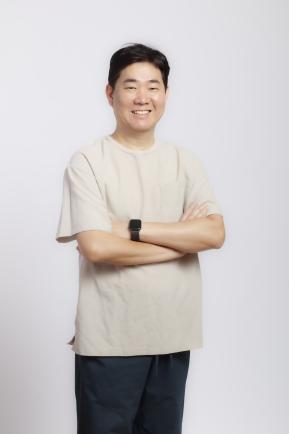Magazine
Design incorporates objects, people,
ideas based on the small pleasures of everyday life.
Meet your wonderful design world with the DDP Design Fair.

The easiest way to create novelty
Collaboration Curator: Ha Ji-hoon, Professor, Department of Living Design, Kaywon University
As an artist, one of the most common
questions I get asked about my work is "Why do you work with tradition?".
Maybe it's because it's not the norm, or maybe it's because they think,
"Why work with tradition when there's something better?” Unless you're
God, creation is about making something that already exists look new. If there
is nothing, we can't create. Therefore, it is a natural act of creation to look
at the past and use it as a material. Even leading overseas designers look to
other countries' traditions to create something new, so I think we should start
with our own. Personally, I find the most attractive traditional furniture to
be the soban. Its distinct differences from tables in other cultures, its
distinct regional distinctions such as gaksang (one person, one table) or for
seating, and najuban, yongyeongban, haejuban, etc. make me feel more than just
the beauty of its form.
At a time when plastic is being criticized
more than ever, why did I have to design a soban (table) made of plastic? The
answer is not that plastic is bad, but that it is badly used. It is impossible
for us to live without using plastic. We need to reduce the bad use, which is
easy to use and throw away, and make it something that can be cherished and used
for a long time. If plastic doesn't decay for 500 years, it can be passed down
for 500 years. The RE:SOBAN pictured here is made from a recycled plastic
called LET ZERO and contains no other material than recycled plastic, so it can
be recycled 100% when discarded. Its KNOCK-DOWN design reduces its volume to
one-third of its size for transportation. The traditional item of the soban is
no longer stuck in the past, but has become a “tradition of the future”,
reflecting the current times.
Single-use plastic containers are a prime
example of bad material use. During the COVID-19 pandemic, I saw a lot of
delivery meal containers piling up every day, so I thought I'd suggest a better
way to use them. It uses the same material and manufacturing method as a disposable
container, but it can be used sparingly and for a long time. As a designer, I
think it is better to use eco-friendly materials and make them last longer than
to recycle them.
How to make something last for a long time
is not only about durability, but the aesthetics, such as with the roof of a hanok,
aesthetics is an important factor that makes people value it. It is necessary
to have value both when used and when not used.
Exploring our past in this way can make us feel guilty for not
appreciating it, like picking ripe fruit without permission. The guilty
pleasure is that the easy source of creation is so close that we can't see it.
| 이전글 | Hands-free IV for disaster zones |
|---|---|
| 다음글 | Redesigning a 50-year-old Linn Sondek LP12 turntable |







